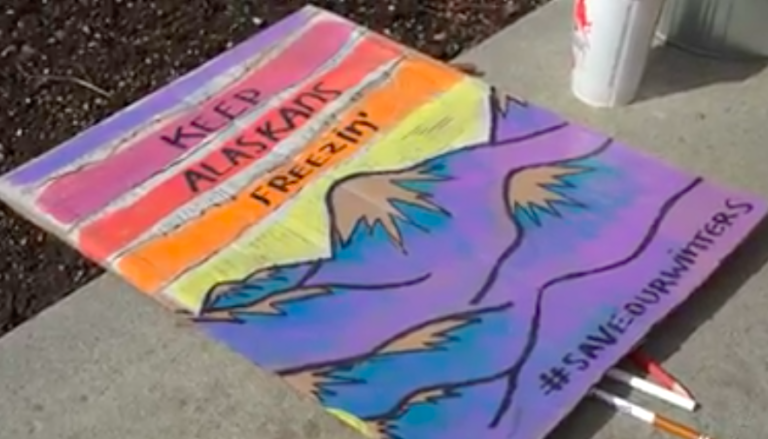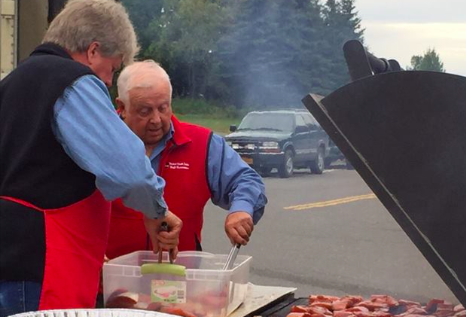BY PAULETTE SIMPSON
GUEST CONTRIBUTOR
Juneau is a jewel of a town.
With just 31,000 residents, it’s also our country’s fifth smallest capital city in terms of population. I would argue that small really is beautiful and by embracing that smallness, we can keep Juneau affordable and livable well into the future.
For over a year, proponents of a new performing arts center (JACC) have mounted a promotional campaign to convince Juneau voters to help pay for construction of an oversized 44,500-square-foot, two-story, $26 million facility. (For perspective, Centennial Hall is 19,680 square feet.)
Some supporters signed on early when the original concept was somewhat more modest and no public funding was anticipated. After plans ballooned and the cost exploded, many community members began questioning the scale and price tag of a project that now demands our tax dollars.
Promoters seem to suggest that the arts in Juneau are in a state of emergency. Yet somehow, as a JACC zealot tells us, the Western States Arts Foundation ranks Juneau as one of the country’s top 10 small cities for creative vitality and vibrancy.
We’ve been admonished that “Juneau is the only capital city in the country without a performing arts center.”
Well, we’re also the only capital city in the country without road access — unlike Santa Fe, New Mexico, a capital city which some suggest should be our model.
Santa Fe (population 84,000) is located within an hour’s drive of Albuquerque (population 560,000) and in comfortable driving distance of numerous communities in the four states bordering New Mexico. That makes it relatively easy and inexpensive for visitors to access and support its cultural resources.
But Juneau could be the Native art capital of the Northwest if only we had a $26 million performing arts center?
I would submit that Juneau has a world-class Native arts presence on display at both the Walter Soboleff cultural and research center, and especially in the galleries of the Father Andrew P. Kashevaroff Library, Archives and Museum Building.
Perhaps more correctly, Juneau could be (and have) just about anything we wanted if we only had a road — and a growing population. But we don’t have either.
The arguments for a 44,500-square-foot JACC deny the stark reality of the state budget and Juneau’s demographics.
Here’s an inconvenient metric to ponder: According to the Alaska Department of Education and Early Development, in 1998-1999, Juneau’s K-12 school enrollment totaled 5,740. By the 2018-2019 school year, K-12 enrollment had dropped to 4,567.
A 44,500-square-foot JACC will require an ever-expanding universe of patrons to meet the revenue projections proponents claim are possible. How will they manage expenses without undercutting the competition and diminishing the rental income streams of smaller venues?
What’s sorely missing from this conversation is a sense of proportion and a measure of modesty. That old-fashioned virtue shows up in another capital city.
About equal in population to Juneau is Helena, Montana. Helena is also a highly cultured community with a history as a regional center for the performing arts.
In 1976 Helena’s municipal offices moved from the (1919) Algeria Shrine Temple to the renovated (1904) federal building, and the Algeria Shrine was converted to a convention/civic center akin to Juneau’s Centennial Hall.
Then, in 1991, Helena transformed its (1894) Lewis and Clark County Jail into a performing arts center, and named it for actress Myrna Loy, who grew up down the street. The community raised the funds to renovate the historic downtown structure into a state-of-the-art venue for concerts, films, art exhibits, and arts education experiences. Known as one of the most vibrant small arts organizations in the rural West, the Myrna Loy is a fully equipped facility with an auditorium, theatre and gallery. And it’s about 7,500 square feet.
Helena embraced its “smallness” and with creativity, but not puffery, re-imagined and re-purposed existing buildings.
Not Juneau.
Rather than propose a less ambitious project, or attempt the hard work of an innovative remodel or inspired addition to Centennial Hall, our glitterati demanded big and brand new. City leaders swooned and got in line.
Perhaps we’re not that creative after all.
I’m voting “no” on Proposition 3.
Paulette Simpson resides in Douglas, Alaska.










